Trimorphic & Bimorphic Heads
by Bob Harms



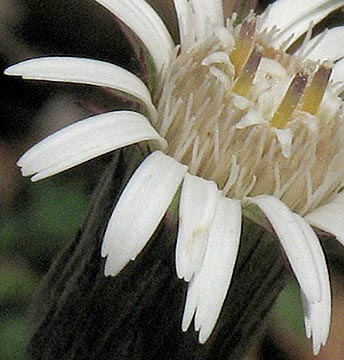 C. texana trimorphic head |
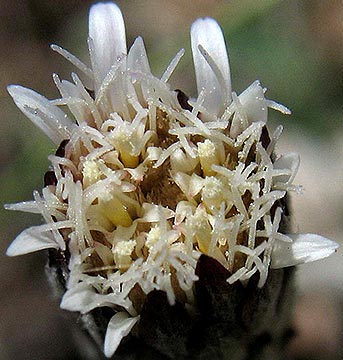
C. carduacea trimorphic head |
|---|---|
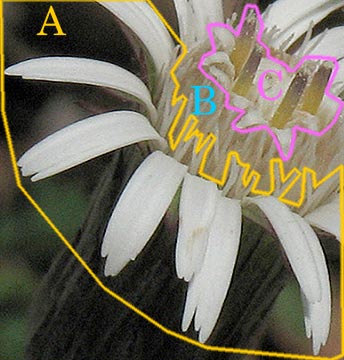
C. texana with 3 floret series outlined |
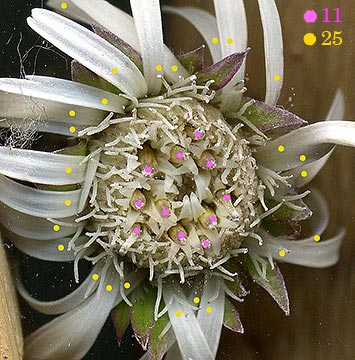
C. texana showing counts for ligulate and central florets |
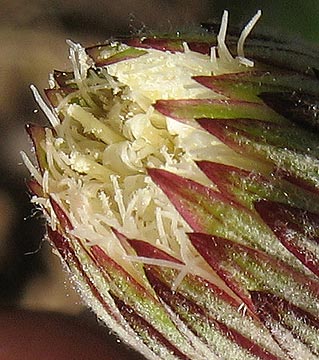
|

|

|

|

|
| C. carduacea closed–head type with reduced ligules A: floret encased in pappus, but crimson color of old ligules peeks through; B: young floret; C–D: older crimson ligules. |
||||
|---|---|---|---|---|
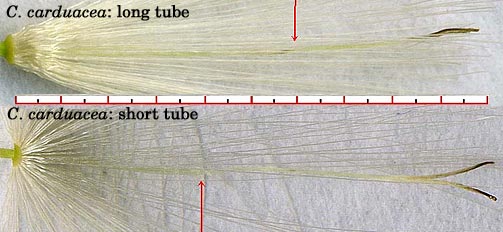
Flowers trimorphic or ligulate pistillate flowers lacking and then flowers dimorphic;It is generally necessary to dissect the head, carefully separating the peripheral florets. Especially with pressed herbarium specimens having heads lacking apparent ligules it is extremely difficult (and at times impossible) to determine whether a head has reduced (vestigial) ligules, long–tublular florets or is truly bimorphic.